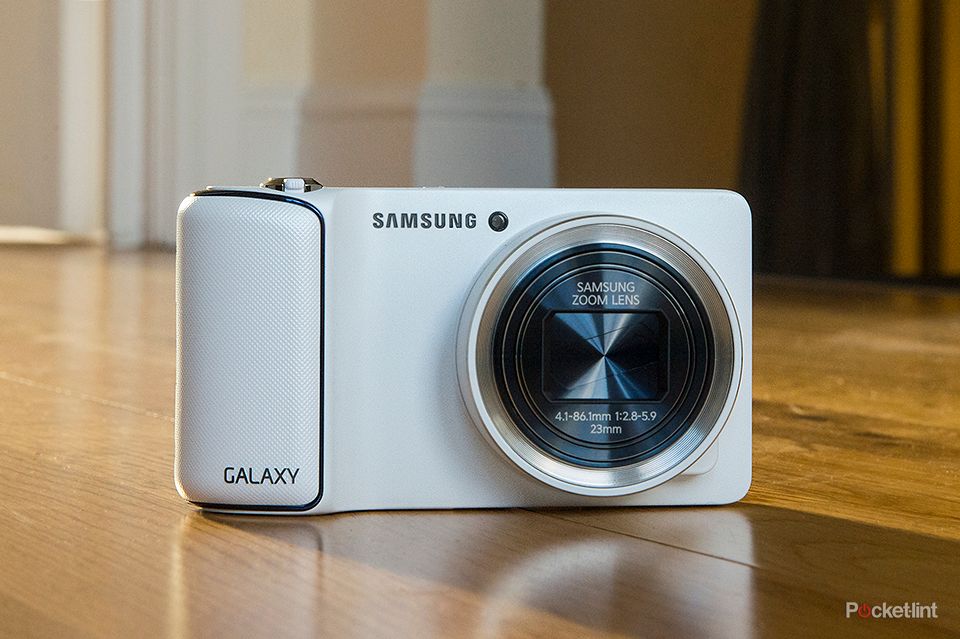There's been a lot of talk about the Samsung Galaxy Camera. Built around Google's Android 4.1 Jelly Bean operating system and with the very same core innards as the Samsung Galaxy S III smartphone, there's little doubt that this is as multimedia capable and network connected as cameras get. You can even add a microSIM for 3G connectivity. But wash away all these fun extras and there's the crucial question: just how well does this Galaxy perform as a camera?
READ: Samsung Galaxy S III review
Pocket-lint has been playing with the Galaxy Camera for a couple of days now. As well as streaming movies via Netflix, sending messages and email - yes, we've got rather sucked in to Android's charms - we've been primarily focused on the device's camera abilities. It's a mix of highs and lows...
Macro mode image sample
From a physical point of view this isn't a small camera, mainly on account of the 4.8in screen which dominates the rear. Imagine a Samsung Galaxy S III smartphone. Now imagine it more than doubled in thickness and more-or-less tripled in weight. That's what the Galaxy Camera feels like in the hand - not particularly heavy in camera terms and easy enough to hold, thanks to a curved grip, but just large in terms of width and height compared to other compacts. Whether a camera of such proportions is desirable is questionable and we're going to see how it fares in pockets, bags and over the shoulder over the coming week.
ISO 400 image sample
With a 23mm-equivalent wide-angle lens and a 21x optical zoom, the Galaxy Camera's lens in combination with the 1/2.3in CMOS sensor size gives an equivalent reach up to a 480mm at the full extent of its zoom. Only a few years ago that would have been considered a superzoom and meant a far larger body size, so despite its outlined physical size, the Galaxy Camera could be considered small if looking at it another way.
ISO 320 image sample
With such a versatile lens it's next to impossible to avoid some optical issues occurring. The primary of these is a lack of sharpness, which is present partly on account of image processing. It's disappointing as shots look sublime on the rear 1920 x 720 HD LCD screen and decent in their smaller-scale on this very page.
Pull them up at full size on a computer screen, however, and softness is prevalent, particularly from shots taken further up the zoom range. Here's a 100 per cent version of the shot above:
ISO 320 image sample shown at 100 per cent scale
This is not due to shooting settings either. The ISO 320 shot above was taken with the camera rested on a railing, with the shutter priority mode set to 1/100th of a second. We've checked and rechecked other shots and pushed the shutter speeds up, but it's much the same: there's still that lack of sharpness. Therefore don't anticipate being able to use images at a huge scale. If anything shots will be far more passable when shared at a smaller scale across social platforms such as Facebook and the like - which is an obvious area that the Galaxy Camera excels in.
Image quality is certainly superior to a camera phone thanks to the compact-camera-sized CMOS sensor which is larger than what would be found in most smartphones, and the ISO 100-3200 sensitivity range can be adjusted - whether manually or automatically by the camera - to compensate for darker shooting conditions.
ISO 3200 image sample
The higher the ISO sensitivity the more "grainy" an image will look, which we camera folk refer to as image noise. It's an unavoidable byproduct of being able to create an exposure when there's less light around.
ISO 3200 image sample shown at 100 per cent scale
Image noise is well handled at the higher ISO settings, in that coloured speckles are rarely visible, but the softness issue is further exacerbated. Again, shots look great on the camera's rear screen, but don't have that "bite" of sharpness at 100 per cent scale at all. Still, the shots are far "cleaner" than you would find from a mobile phone camera.
The lowest ISO 100 sensitivity is the most favourable setting and this will be most commonly used in daylight settings which is good news.
ISO 100 image sample
This 23mm equivalent wide-angle shot shows much better sharpness towards the centre subject, as shown at 100 per cent scale below. There's still some degree of image processing that's visible, as those "painterly" textured flecks throughout the grass area reveal, but this is typical of a compact camera.
ISO 100 image sample at 100 per cent scale
A common issue with compact cameras is the presence of chromatic aberration - those coloured drop-shadow-like edges that fall around a subject's sides, often tree branches and contrasty edges. The Samsung Galaxy Camera shows some purple and green fringes towards subject edges, though these are largely corrected for by the camera's processing. Fine details in trees don't escape it however:
ISO 100 image sample
So it's a bit of a mixed bag. The Galaxy Camera has some positives in terms of operation - more on that in our full review next week - but the images aren't always sharp enough to cut it for more demanding users.
For its £400 asking price - and irrelevant that it's cheaper than an SGS3, comes with the benefit of pre-loaded goodies and the power of Android's expandable potential - images should be sock-knockingly good. But, from what we've seen so far, they may frustrate just as much as they please.










